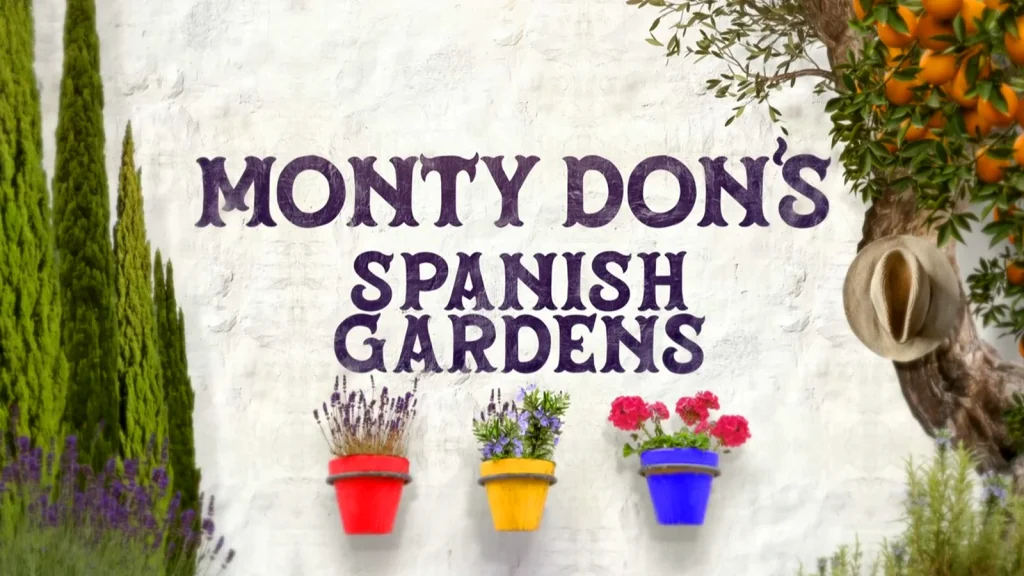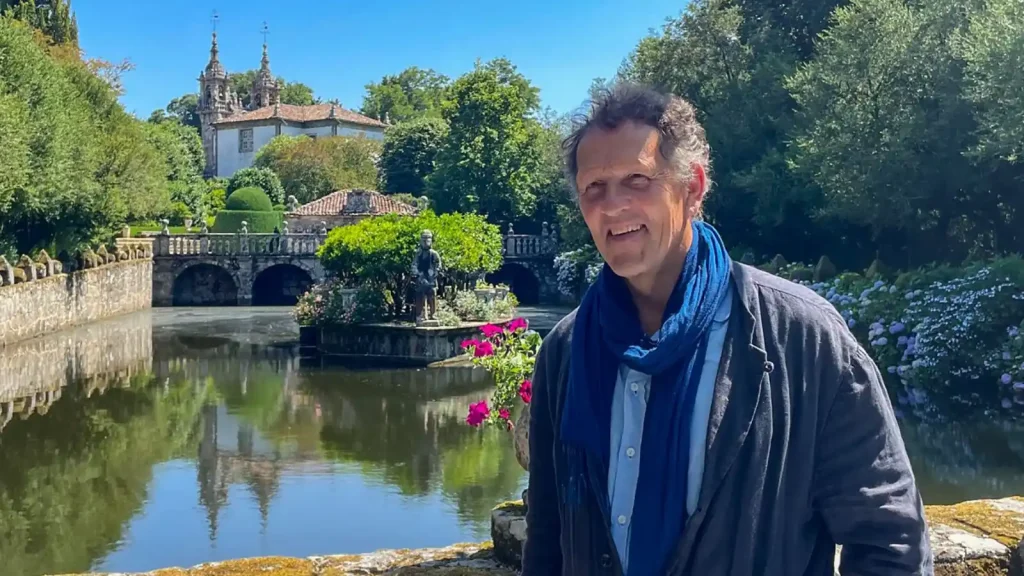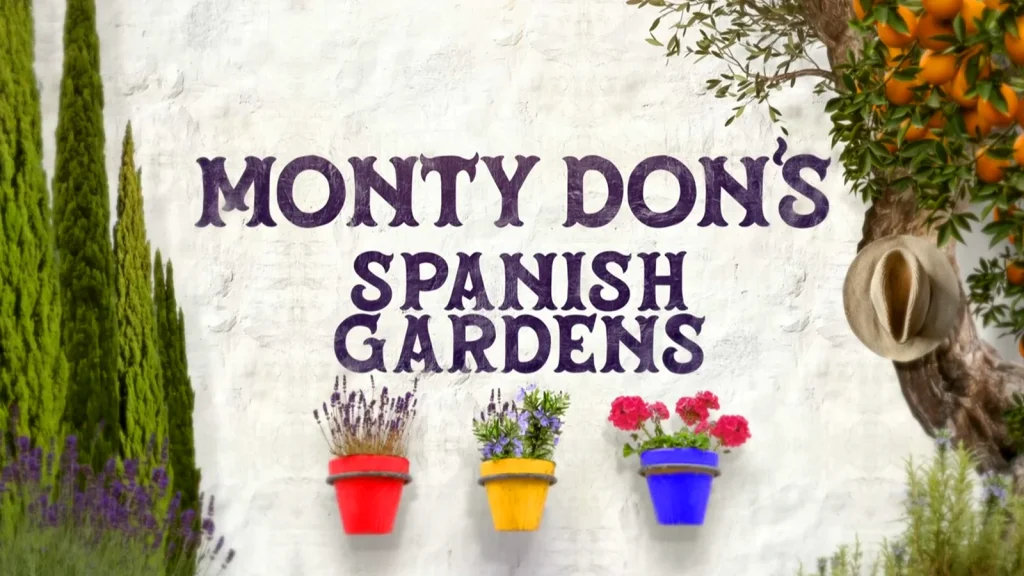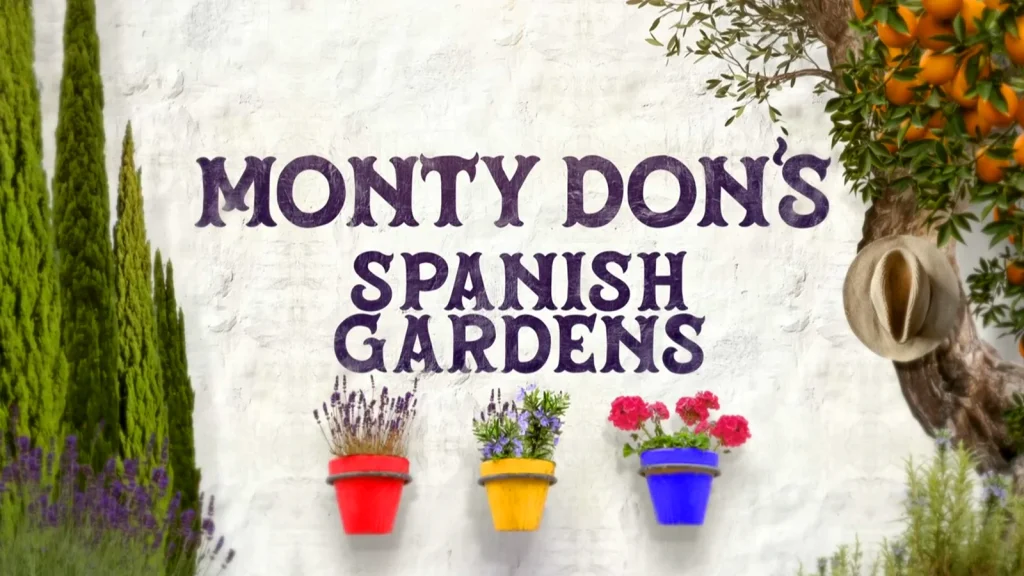Monty Don’s Spanish Gardens episode 3 – Monty Don’s captivating journey across the diverse northern regions of Spain unveils a tapestry of cultural richness, architectural splendor, and horticultural wonders. From the westernmost reaches of Galicia to the easternmost bounds of Catalonia, this exploration traverses the rugged landscapes and vibrant traditions that define each distinct region.
Galicia, a land steeped in ancient folklore and Celtic heritage, greets visitors with its verdant countryside and enchanting stone villages. Here, at the very footsteps of the majestic Santiago de Compostela Cathedral, an unexpected oasis blooms – an allotment cultivated by local gardeners, a verdant respite amidst the grandeur of the sacred site. As Monty delves into the region’s horticultural legacy, he uncovers the profound connection between the land and its people, where every garden tells a story of resilience and reverence for nature.
Cantabria, a coastal paradise nestled between the Picos de Europa mountains and the Cantabrian Sea, unveils its own unique charms. From the quaint fishing villages dotting the rugged coastline to the lush meadows and rolling hills inland, Cantabria’s gardens reflect a harmonious coexistence with the surrounding natural beauty. Monty explores the region’s traditional hórreos, ingenious stone granaries elevated on pillars, revealing the ingenious methods employed by locals to preserve their agricultural bounty.
Asturias, a land of contrasts, beckons with its breathtaking landscapes and rich culinary traditions. Nestled amidst the towering peaks of the Picos de Europa and the pristine beaches of the Cantabrian coast, Asturias boasts a diverse array of gardens that mirror the region’s varied terrain. From the meticulously manicured gardens of stately pazos (manor houses) to the humble yet vibrant kitchen gardens of rural villages, each garden tells a story of resilience and adaptation to the unique microclimate.
The Basque Country, a region steeped in a distinct cultural identity and a fierce sense of pride, captivates Monty with its avant-garde spirit and innovative approach to gardening. In the heart of Bilbao, a stunning installation – a giant puppy composed entirely of live plants – stands as a testament to the region’s creative prowess and appreciation for nature’s beauty. Monty delves into the fascinating history of the Basque Country’s caseríos, traditional farmhouses that have served as the backbone of the region’s agricultural heritage for centuries.
Monty Don’s Spanish Gardens episode 3
Finally, Catalonia, a land of artistic brilliance and architectural marvels, beckons with its unique blend of Mediterranean influences and avant-garde sensibilities. In Barcelona, Monty explores the groundbreaking Botanical Garden, a living museum that showcases the region’s rich biodiversity and serves as a hub for research and conservation efforts. From the whimsical gardens of Antoni Gaudí’s masterpieces to the meticulously designed public spaces that dot the city, Catalonia’s gardens reflect a harmonious fusion of art, nature, and innovation.
Throughout his journey, Monty Don unveils the intricate tapestry of Spain’s northern regions, where each garden, each architectural marvel, and each cultural tradition weaves a vibrant narrative that celebrates the enduring spirit of the land and its people. From the rugged coastlines to the towering mountain ranges, from the bustling cities to the remote villages, Monty’s exploration serves as a testament to the enduring allure of Spain’s diverse and captivating landscapes, inviting viewers to embark on their own journey of discovery.

F.A.Q. on Monty Don’s Spanish Gardens Episode 3
Q.: What regions of Spain does Monty Don explore in the third episode of his Spanish Gardens series?
A.: In episode 3 of Monty Don’s Spanish Gardens, Monty embarks on an enlightening journey through the northern regions of Spain. His exploration covers the verdant landscapes and cultural richness of Galicia, Cantabria, Asturias, the Basque Country, and Catalonia. Each region offers a unique blend of horticultural wonders, architectural splendor, and deeply rooted cultural traditions.
Q.: Can you describe a unique garden feature Monty Don discovers in Galicia?
A.: In the lush region of Galicia, Monty Don is captivated by an unexpected horticultural gem located at the footsteps of the majestic Santiago de Compostela Cathedral. Here, he finds an enchanting allotment garden cultivated by local gardeners, serving as a verdant oasis amidst the grandeur of the sacred site. This discovery highlights the profound connection between the land and its people, where gardens tell stories of resilience and reverence for nature.
A.: In Cantabria, Monty Don explores the traditional hórreos, which are ingenious stone granaries elevated on pillars. These structures reflect the region’s clever methods of preserving agricultural bounty and showcase a harmonious coexistence with the surrounding natural beauty. Monty’s fascination with these granaries underlines the innovative spirit and practical wisdom of the local gardening and agricultural practices.
Q.: How does Monty describe the gardens of Asturias, and what makes them special?
A.: Asturias, a land of breathtaking landscapes and rich culinary traditions, impresses Monty Don with its diverse array of gardens. He notes the meticulous care in the gardens of stately pazos (manor houses) and the vibrant kitchen gardens of rural villages. These gardens, each telling a story of resilience, are special for their adaptation to the unique microclimate of the region, reflecting the local community’s connection to their environment.
Q.: What avant-garde garden installation does Monty discover in the Basque Country, and what does it signify?
A.: In the Basque Country, Monty Don is captivated by an avant-garde garden installation in the heart of Bilbao – a giant puppy composed entirely of live plants. This striking creation stands as a testament to the region’s creative prowess and its appreciation for nature’s beauty. It signifies the innovative spirit and cultural identity of the Basque Country, highlighting a unique fusion of art, nature, and urban landscape design.
Q.: How does Catalonia’s approach to gardening and landscape design stand out in Monty Don’s exploration?
A.: Catalonia’s approach to gardening and landscape design stands out through its blend of Mediterranean influences, avant-garde sensibilities, and a strong commitment to biodiversity and conservation. Monty Don is particularly impressed by the Botanical Garden in Barcelona, which serves as a living museum showcasing the region’s rich biodiversity. The whimsical gardens of Antoni Gaudí’s architectural masterpieces and meticulously designed public spaces exemplify Catalonia’s harmonious fusion of art, nature, and innovation.
Conclusion Monty Don’s Spanish Gardens episode 3
As Monty Don’s journey through the northern regions of Spain draws to a close, one can’t help but be struck by the incredible diversity and richness of the horticultural and cultural tapestry he has unveiled. From the ancient allotments of Santiago de Compostela to the avant-garde plant sculptures of Bilbao, this expedition has served as a poignant reminder of the profound connection between humans and the natural world.
Throughout his travels, Monty has encountered gardens that are not merely aesthetically pleasing, but rather living repositories of history, tradition, and innovation. Each carefully tended plot, whether a humble kitchen garden or a grandiose botanical showcase, tells a story of the region’s people, their struggles, their triumphs, and their unwavering reverence for the land that sustains them.
What becomes abundantly clear is that in these northern Spanish regions, gardening is more than just a hobby or a means of beautification – it is a way of life, deeply intertwined with the cultural fabric and identity of the communities. The gardens Monty has explored are not merely collections of plants, but rather living canvases upon which the region’s unique heritage, customs, and values are painted in vivid hues.
From the ingenious hórreos of Cantabria, designed to preserve the precious harvests, to the meticulously cultivated pazos of Asturias, reflecting the region’s aristocratic legacy, each garden stands as a testament to the resilience, ingenuity, and adaptability of the people who have shaped these landscapes for generations.
Moreover, Monty’s journey has highlighted the profound impact that geography and climate have had on the horticultural practices of these regions. The rugged coastlines, towering mountain ranges, and varied microclimates have all played a role in shaping the unique expressions of gardening found in each area, reflecting the delicate balance between human intervention and the forces of nature.
As the world continues to grapple with the challenges of climate change, urbanization, and the loss of biodiversity, the gardens of northern Spain serve as a poignant reminder of the importance of preserving and celebrating our horticultural heritage. These living museums not only showcase the beauty and diversity of plant life but also offer valuable lessons in sustainability, conservation, and the harmonious coexistence between humans and the natural world.
Monty Don’s exploration of the Spanish gardens has been a journey of discovery, a celebration of cultural richness, and a testament to the enduring power of nature to inspire, heal, and bring communities together. As we bid farewell to these captivating landscapes, we are left with a renewed appreciation for the profound connections that bind us to the earth and a deeper understanding of the vital role that gardens play in preserving our shared heritage for generations to come.



Pingback: 14 March: circular thinking project day 3 | Tangly Cottage Gardening